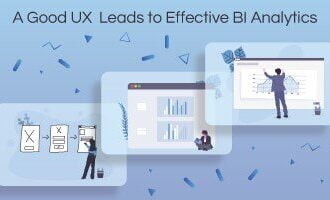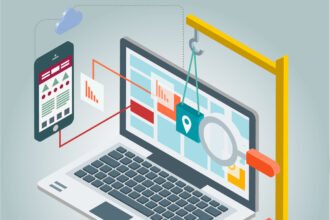This is a Usabilla guest post by Niko Nyman. I love good products.
This is a Usabilla guest post by Niko Nyman. I love good products. I love a kitchen knife that is perfectly balanced, I love it when someone transforms a product category by taking a fresh look at the process – the old way of doing things – and making it easier for everyone involved, I love a car so cleverly designed it has a light underneath the door to show me where I put my foot when getting out, I love a web app that draws me in without blocking my flow with four-step registration and a five-minute tutorial video, and I love great service from companies who empower staff to overcome customers’ problems. I love products with a great user experience, whether physical, digital or service-based.
That’s why I love writing about the importance of good user experience design, and that’s also why I get uneasy when I see “user experience design” reduced to nothing but the act of making good design decisions during implementation. I don’t believe all user-facing activity should be called UX design, or that everyone who “designs” should be called a UX designer. Yes, devil is in the details, and making every detail just right is crucial, but getting a “UX professional” to meticulously craft details for a failed product idea can’t turn that idea into a satisfying user experience. You can’t polish a turd.
So what is this more grand act of user experience design, then, if not drawing perfect wireframes or adjusting the CSS transitions just right? And who are these mysterious UX designers? I will try to answer the first question with a hypothetical but practical process that goes from idea to implementation. This process is practical, because in a perfect world I’d like to think you could follow this outline and come up with a truly great product. The process is hypothetical, because we don’t live in a perfect world. I’ll get back to the second question later.
Before I start with the process, I will tell you what I believe. If you have seen the presentation on user experience I gave during Web 2.0 Expo in Berlin 2008, you already know this. While the presentation is all nice and fluffy and draws broad lines over artfully selected Flickr images, it does make a few fundamental points I still stand by. Specifically, that:
- User experience is subjective, yet
- user experience can be designed, and
- a good user experience has business value.
To elaborate quickly: Every user experiences your product in a subjective way. Despite this, you can design and create an intent for delivering and evoking a certain experience. If this was not possible, then we would not have horror movies, sci-fi novels, Celine Dion singing ballads, or anything that’s “designed” to move you. Being able to make users feel something has tremendous business value. It doesn’t take a genius to say you will have a hard time competing if your product doesn’t make the user feel anything. Yes, it can be done. On eBay you can get millions of generic no-brand products from China for a fraction of the cost of a branded alternative. Yet people buy the more expensive option, because of the experiential qualities in those products. Qualities like “design”, “brand” or even “prestige”. In digital products the gamut of possible experiences is even wider.
On with the process:
- Start with an income generating product idea. It’s up to you how honest you want to be about the income due from the idea: some companies want to see raw income numbers on an Excel sheet, some companies are happy with the indirect income imagined within the sentence “it will boost our brand value”.
- Figure out the ultimate, integrated, end-to-end user experience for that idea. Revisit the problem you’re trying to solve for the users. How does the product idea fit within the users’ current process for solving the problem? Is it necessary to change the users’ process for solving the problem to create a good experience? If yes, how do we overcome resistance for change and how do we manage the user experience of changing a habit? What possibilities can technology provide to make the end-to-end experience better? What aesthetic possibilities are there to make the experience better? Are there other opportunities in marketing or logistics, or can partners empower you to provide a better experience? Be creative and think out of the box: you’re designing the experience.
- Use the design of the ultimate user experience to revise and improve the original product idea. Ideas often come from engineering or marketing. It is not uncommon to see the original idea get transformed completely when viewed through the UX lens. The designed user experience can dictate a completely new business model for the product, it can expand the product to cover more of the users’ end-to-end experience, or it can simplify the product idea down to it’s most useful and valuable core.
- Plan details of the user experience. With the revised product idea, and the user experience design at hand, start planning the details of the user experience. Create user flows and figure out specific steps the user can take in the end-to-end experience. There is much in common with, and depending on your field, also possible overlap with service design. Thinking in service design terms about touch-points and the customer journey is useful.
- Estimate the cost of implementing the desired experience. How much would it cost to implement the product idea and the designed, ultimate end-to-end experience? What costs would accrue from marketing, visuals, technology, service, support, maintenance, etc? You only need to come up with a very rough ballpark figure required to…
- Revise idea to make it realistic. You have the product idea, you have dreamed up the ultimate experience, you have investigated what it takes to implement the experience, and you should have a hunch about the potential business value for making all of this happen. Now if the cost from the previous step is in millions and the business value is in the thousands, you really need to revise your idea. What can you take out of product features or the user experience while making minimal reduction to the value of the product? Your task is to reduce cost dramatically, while reducing the business value of the product minimally. Most often (but not always) business value goes hand in hand with end user value: when you reduce business value, you reduce value of the product for end users. As user experience is often fluffy, it is very easy to start reducing cost by cutting UX efforts. But it is very important to be able to see when reduction in the value of the user experience is in fact making the product less significant for end users, potentially resulting in drastic reduction of business value.
- With a realistic product idea and a user experience plan at hand, it’s time to implement the idea. This is the stage where the “UX designers” of today sit in their comfy office chairs putting the pixels in the right place — although they rarely have an idea of, and even less rarely documentation of the thought-out and designed user experience they should be building. I hope you’re starting to agree with me that “UX designer” is not a fit job title for a front-end coder with a little eye for visuals.
Who is worthy of the UX Designer title? My gut tells me just about anyone, who can communicate well, maintain a holistic view of the product, and focus the team and efforts on delivering the intended experience. This requires feeling sympathy towards the users of the product, while taking in the harsh realities of the business requirements (or constraints, as the case often is). The UX designer is there to envision and design a trusted environment that supports the users’ goals, while amplifying business value with emotional design cues and other clever elements that pull in new users, excite users to share, and keep users coming back to the product. When the user experience is perfect, new users instantly get drawn in, existing users want to tell all their friends about the product, creating a viral effect, and no user wants to leave the product or stop using it. To have this is completely different from asking users what they want, and fulfilling those wants.
While programmers make sure the servers run without a glitch, front-end coders work around browser quirks, interaction designers lay out the paths of least resistance through the user interface, copywriters look at every word for better understanding, and visual designers make everything pretty, the job of the User Experience Designer is to make sure the intended experience unfolds as planned, and to keep asking: Are we building something remarkable?
—
This is a Usabilla guest post by Niko Nyman.








